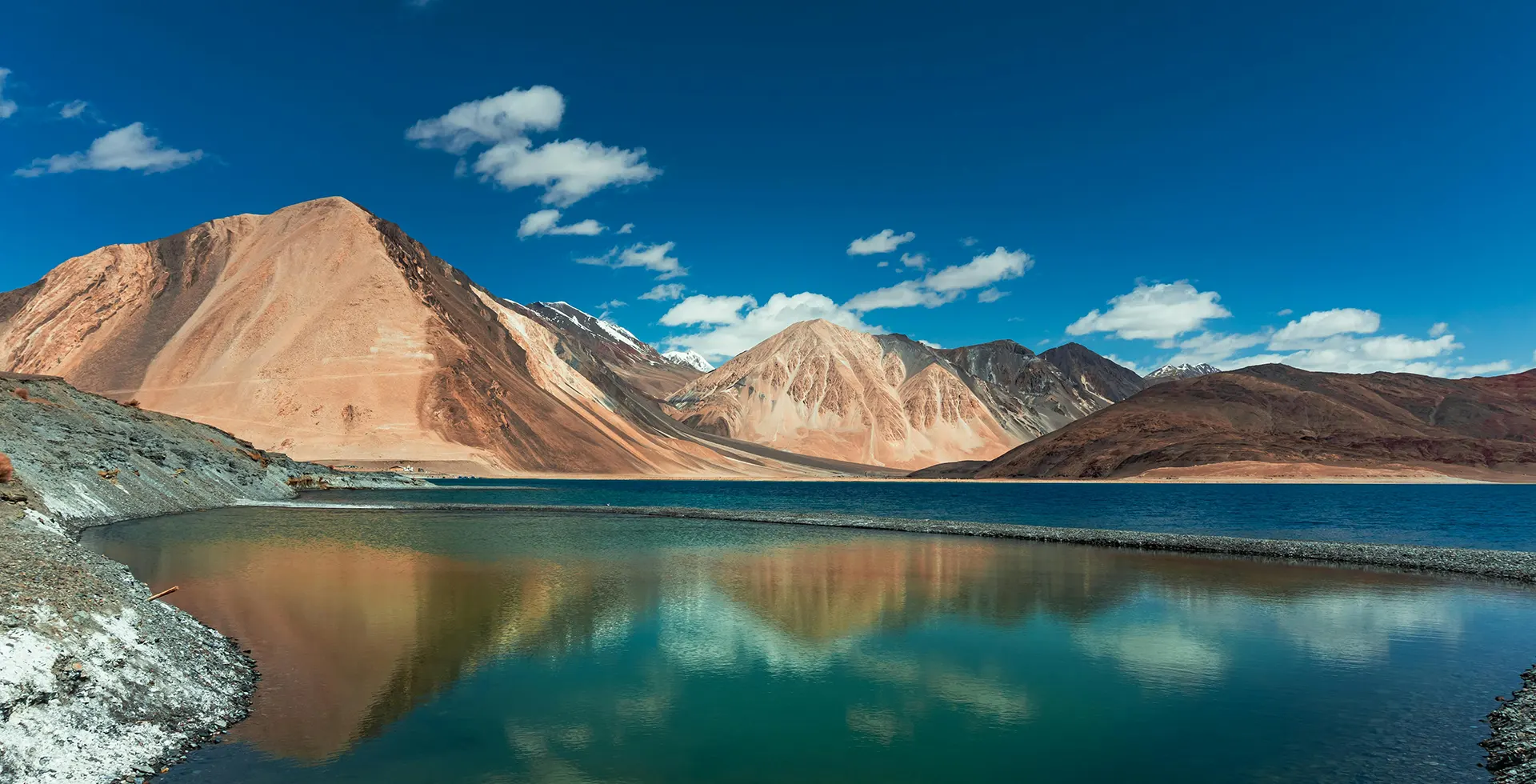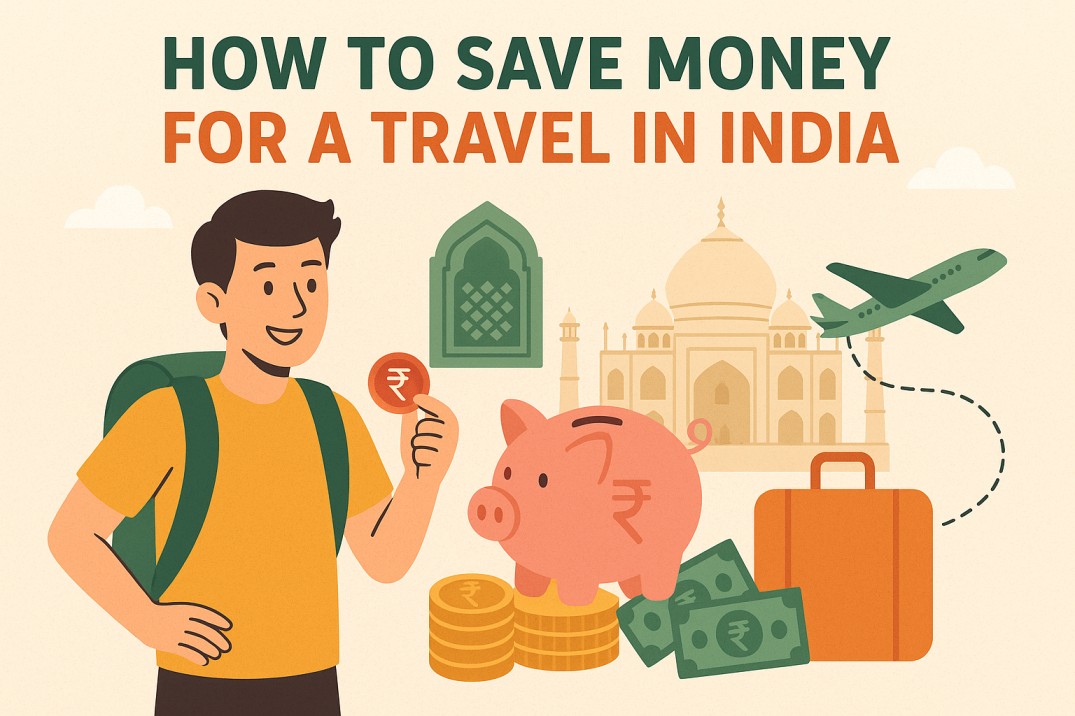

Traveling in India will leave you with unforgettable moments in vibrant cultures, historical sites, and stunning views, but understanding how to put your travel budget together might be your biggest challenge. Saving money towards your dream travel should be both achievable and realistic with a bit of planning, determination, and smart decision-making.
The first step towards set goals is researching the amount you will need, so in this case, starting with the budget. Gathering information on cost for travel, accommodation, food, and activities will cover the basics. Remember to factor in travel-related expenses like travel insurance, souvenirs, and funds for unforeseen incidents. A set benchmark will make your saving process more efficient.
Creating a new savings account with a travel goal in mind will help you keep track of money saved without touching your day-to-day funds. The money can be set to automate a small monthly transfer. Even a small amount of money set a side towards this goal will become a habit. The small amount will put in the new account will accumulate. After some time, this habit will build towards a large sum.
Observe your monthly spending to look for areas to cut back. Reducing online shopping, skipping that daily café coffee, or cooking more often can add up to surprising amounts. Put these amounts straight into your travel fund.
Pay attention to promotional fares for flights and trains, as well as hotel discounts. During festive seasons or off-peak months, a lot of travel sites have exclusive deals. Joining the mailing lists of airlines and booking platforms will let you access these deals sooner.
If your schedule allows, try to travel around off-peak seasons. Not only will you save on flights and accommodations, you will also have access to less crowded tourist attractions. For India, off-peak travel typically ranges between April to September depending on the region.
While traveling within India, the country’s public transport trains, buses, and metro systems are much more affordable than private cars or taxis. Booking Sleeper trains and state-run buses not only save you money, they also spare you the hassle of last-minute booking.
For flights, accommodations, and activities, booking them in advance yields better value, lower prices, and greater availability. Popular places tend to fill up quickly, and booking your plans in advance makes sure that you don’t get forced to pay higher last-minute prices.
If you are sociable, group tours are an excellent option that can minimize your expenditures. Expenses such as guides, transportation, and entrance fees can easily be shared. Some India tour packages also provide bundled offers, which are far more economical than purchasing each component separately.
Part-time jobs, freelancing, and selling unused items can all add to your travel fund, and those little bits can make a big difference for a short trip versus an extended getaway.
Q1: How long in advance should I start saving up to travel to India?
It’s all about your funds and your income. If you save regularly, a two-week trip can be fully-prepped for in 6 to 12 months.
Q2: What’s the cheapest way to travel within India?
The cheapest options available would be bus and train travel. You can get better prices if you book early on the Indian Railways and state transport websites.
Q3: Is travelling in India expensive for foreigners?
No, India has many options, such as budget hotels and high-end luxury hotels. With some thought, it can be one of the cheapest places to visit.
Q4: How can I find budget-friendly accommodations?
Check out the many online travel websites for hostels, guesthouses, and homestays. You can grab some amazing bargains by booking early or in the off-season.
Read More: Top Budget-Friendly Winters Destinations in India
Saving for travel isn’t about sacrifice—it’s about prioritizing your dreams over distractions
How The Travel Dreamz Helps Plan Dream Family Vacation This Christmas 1. Family Friendly Itinerary Every family is unique with different preferences. The Travel Dreamz takes into consideratio
18 Dec 2025Some of the must-visit places in India for a solo traveler, followed by why it’s a great idea to plan your trip with The Travel Dreamz ## 🌍 Must-Visit Places in India for S
10 Dec 2025Before, India has become a reliable destination for international medical travelers because of its world-class hospitals, advanced treatments, expert doctors, and cheap health care. However, lack of k
21 Nov 2025Surrounded by scenic beauty and Ayurvedic heritage Kerala is one of the most reputed places in the world offering authentic Panchakarma treatment. The calm and lush landscape of the region set the sta
19 Nov 2025Among developing countries, India has one of the best reputations in the world when it comes to providing medical care to people in different countries. From surgeries of all kinds to pure wellness th
31 Oct 2025For couples seeking romance, peace, and beauty, a honeymoon in Lakshadweep is a dream come true. Beautiful beaches, lagoons, and sea life provide a perfect alternative to the banality of everyday life
13 Oct 2025India is not just a country. It is a living and breathing country with rich and diverse culture, heritage, and geography. Eight different landscapes contain diverse and beautiful country. Every Indian
01 Oct 2025Kerala, famously known as "God's Own Country," boasts of green scenery, backwaters, and beautiful beaches. Ayurveda, known as the world’s oldest system of holistic medicine, originated
18 Sep 2025With its lush hills, peaceful backwaters, sun-kissed beaches and age-old temples, South India is simply irresistible to anyone who loves to travel. Yet a rewarding trip here hinges on careful planning
07 Sep 2025India has long been known for its spirituality, with culture and religion intertwined. For those keen to experience India’s spirituality, the city of Ayodhya is very important. Recently, the mag
29 Aug 2025A honeymoon marks one of the most extraordinary trips in a couple’s life — celebrating love, unity, and the start of a new chapter together. India offers some of the most breathtaking hone
29 Aug 2025With more than 5,000 years of history, Ayurveda is one of the world’s oldest systems of holistic healing, with India regarded as its birthplace. Ayurveda promises long-term healing, balance, and
25 Aug 2025Medical tourism is a term used to describe traveling to a foreign country to obtain medical treatments, and India is one of the most popular destinations for this type of travel. India is known for it
25 Aug 2025India has emerged as a leading hub for medical tourism, welcoming thousands of international patients each year. The country combines renowned expertise with affordable prices, advanced technology, an
23 Aug 2025India has emerged as a premier destination for medical tourism, welcoming countless international patients each year in search of cost-effective yet world-class care. Whether your journey includes com
17 Aug 2025Top Indian Vacation Destinations For Families Hitting the open road with the family is one of the sweetest kinds of adventure. New cultures, soft breeze in your hair, and a billion stories to share
17 Aug 2025Your honeymoon marks a fabulous new chapter in your life, so planning it can be thrilling. Many couples prefer booking tickets online because it offers convenience, flexibility, and potential savings.
14 Aug 2025Traveling in India will leave you with unforgettable moments in vibrant cultures, historical sites, and stunning views, but understanding how to put your travel budget together might be your biggest c
12 Aug 2025India is not just a country of monuments and festivals; it is a living museum and every street, market, and heritage site is a story waiting to be uncovered. For India, the curious mind offers a pleth
10 Aug 2025India is a paradox of ancient and modern, chaotic yet calming, overflowing yet deeply soulful. For solo female travelers, India provides not only a journey but also a life-altering experience. Regardl
07 Aug 2025Setting aside time and space to recuperate mentally and physically in today’s world is often seen as an indulgence. Indeed, for centuries, India has offered the rest of the world holistic healin
05 Aug 2025India’s winter months-November through February-give families a welcome break from heat and rain, turning the country into an affordable playground. Snow-dusted peaks, warm beaches, or rich loca
02 Aug 2025Travelers from USA often dream about exotic holidays in India. From the frosty peaks of the Himalayas to the enchanting backwaters of Kerala, India has a lot to offer in terms of travel and tourism. H
30 Jul 2025Kerala stands out as an ideal family getaway, mixing eye-catching scenery, rich traditions, and peaceful waterways. Learn how to pick the perfect holiday packages for India matches your familys intere
23 Jul 2025India now ranks among the top places for medical tourists, drawing thousands of people each year who need quality care at prices they can afford. Thanks to hospitals approved by global agencies, exper
17 Jul 2025Short Description: Planning a family vacation in India? Discover how to choose the perfect tour package that suits your familys needs, preferences, and budget. Family holidays create memories that st
09 Jul 2025The right honeymoon choice gives life to a deeply cherished moment in a couple’s life. Making note of the region's culture and landscape is important when selecting unforgettable places for a ho
30 Jun 2025Rajasthan, with its stately forts, sweeping deserts, colorful fairs, and stories etched in every wall, promises travelers a taste of kingship. Whether your trip includes a walk through heritage lanes,
30 Jun 2025India is a land of diversity, where every region offers a unique travel experience-be it serene backwaters, snow-capped mountains, or royal palaces. But piecing together the perfect trip without overs
29 Jun 2025ndia holds a fascinating mix where splendor often lives side by side with thrift. Travelers hunting for plush moments that wont crack the bank should pay attention because several Indian spots weave t
17 Jun 2025Short Description: Amer Fort in Jaipur is a royal blend of history, architecture, and culture. Explore why this iconic fort is a top tourist destination and a must-visit spot in Rajasthan. Jaipu
10 Jun 2025Introduction Rishikesh, ‘the Yoga Capital of the World’ is located in the Inder Himalayan region of Uttarakhand. A blend of natural beauty, cultural value, and a haven for adventure act
10 Jun 2025Jaipur is the vibrant capital city of Rajasthan, situated in the northwestern region of India. It is referred to as the Pink City. One of the major tourism places in India, Jaipur is known for its roy
12 Feb 2025Exploring Agra: The Sites Other than Taj Mahal With Éclat For most people, the first destination in India is the Taj Mahal and for a good reason as the white marble structure is a symbo
10 Feb 2025Temple towns in southern India are without a doubt the biggest achievement in the world. The backwaters and beaches of Kerala, as well as the wildlife sanctuaries of Nilgiris, and the other beaches in
06 Feb 2025Tourism in north India really showcases the best tours and travel in all over the country India. It provides a wide range of tour packages to the visitors from all over the globe. The attraction in th
05 Feb 2025The Indian subcontinent is endowed with the most varied geographical divisions and climatic variations. Naturally, the diverse landscape and climatic conditions serve as natural habitats to a vast var
03 Feb 2025North India is one of the most popular regions in India in terms of tourism and holiday destinations. Travelling in northern India gives tourists a close insight into great Indian heritage and the min
01 Feb 2025